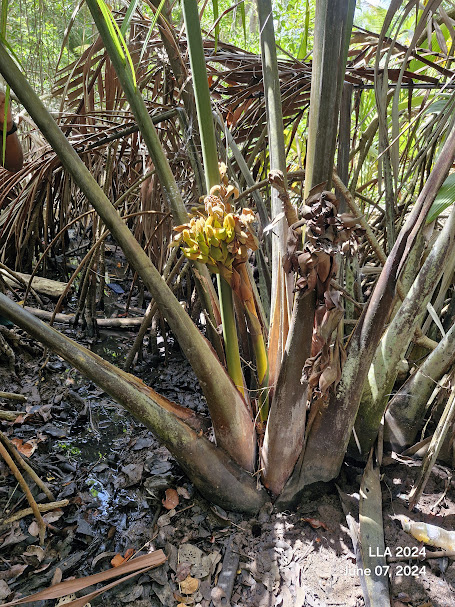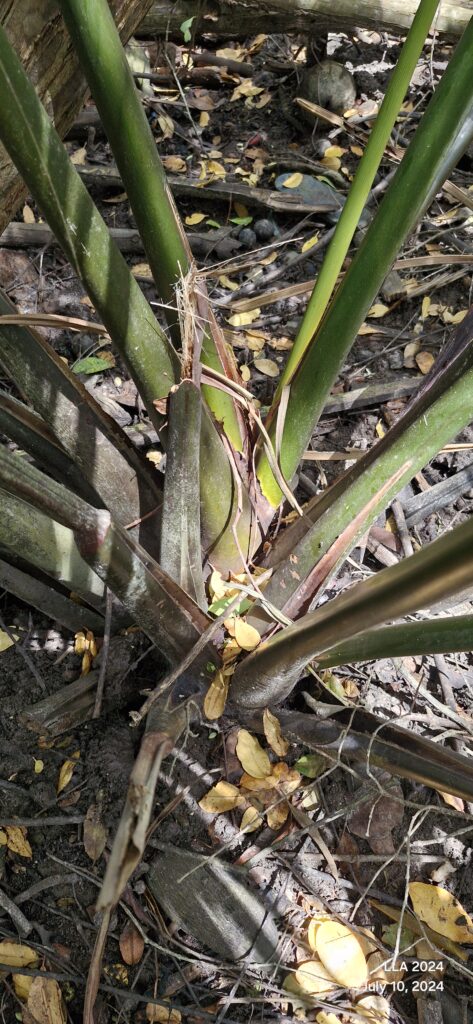

At long last, a breakthrough occurred earlier this year. In March 2024, a complete Nipa Palm Population including seedlings, juveniles and mature adults was discovered in Guayaguare, Trinidad, during a Bioblitz reconnaissance trip. Following this, another Nipa palm stand was detected in Lambeau, Tobago, during an April 2024 oil spill cleanup.
There are scientists who believe that Nipa Palms (Nypa fruticans – Arecaceae) are naturalized in Trinidad and Tobago. However, despite these claims, no established populations were confirmed until this year.
For decades, during TTFNC monthly field trips, members have kept a keen eye for Nipa Palm drupes, seedlings and adults along numerous rivers and bays around the islands (Oropouche River, Nariva River, Columbus Bay, Marianne River, Corral Point, Irois Bay, Icacos Bay, Erin Bay, Quinam, Maracas Bay, Macqueripe, Yarra River, Cali Bay, Claxton Bay, Marac Bay, Buccoo Bay and Castara Bay). Members collected viable drupes and seedlings of the Nipa Palm, primarily along the east coast of Trinidad in areas such as Toco, Salybia, Manzanilla and Guayaguayare. Additionally, over the past three decades, TTFNC member Dan Jaggernauth has distributed numerous healthy Nipa seedlings to the public. Although a lot of these were planted, only a few specimens survived. To date, only one Nipa palm was recorded as surviving, approximately twenty years after being planted.
Locally, the fibrous pericarp of the drupe has been used traditionally for scrubbing pots and utensils. However, in this regard, no sighting of an adult tree has been recorded.
The Nipa Palm is considered as one of the most widely distributed palm in the mangrove forests of south/southeast Asia and Oceania. Its distribution area is known to be larger in ancient times than at present, as evidenced by fossils found in North America, South America, Egypt and Europe. This species was introduced to several regions and countries such as Cameroon, Nigeria, Panama, Guyana and Trinidad and Tobago. It has been submitted that there is the possibility that Nipa Palm seeds and seedlings washing up on Caribbean beaches originated from South America via Guiana currents.
As the pictures above indicate, the Nipa Palm has no visible stems above the ground. Considered one of the oldest living palms, it is best adapted to growing in coastal mangrove areas with less extreme salt content. The Nipa prefers brackish waters at river mouths.
The Nipa plant is used in a number of ways at an international level. These include: roof thatching, for medicinal purposes, handicrafts and food and beverages. The endosperm in the fruit is whitish-translucent in colour, edible and sweet.
Members of the TTFNC will continue to record Nipa Palm sightings in Trinidad and Tobago.